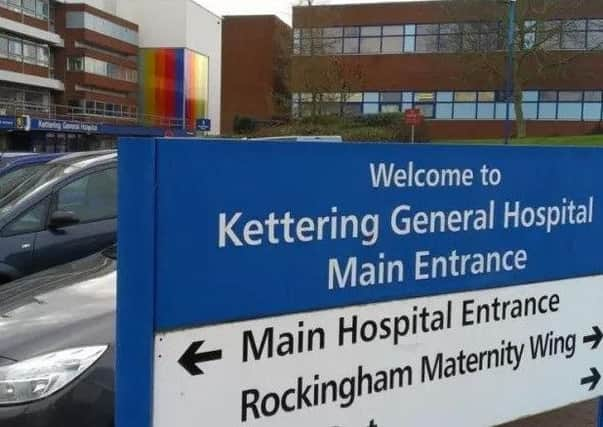No safety issues at KGH despite high bed occupancy figures, say bosses


According to figures from NHS England for the week January 7 to 13, bed occupancy on general and acute wards at KGH were 97.6 per cent full on average, exceeding the safe limit of 85 per cent recommended by health experts.
On average, Kettering General Hospital had 537 available beds each day, of which 524 were in use.
Advertisement
Hide AdAdvertisement
Hide AdOf those, 12 were escalation beds – temporary beds set up in periods of intense pressure.
KGH chief operating officer Jo Fawcus said: “While bed capacity of below 85 per cent is ideal, in winter hospitals inevitably have to cope with higher rates.
“This does not mean they are unsafe and at KGH we have very well organised care systems in place that mean we maintain a very high level of safety for our patients at all times.
“We also have flexible capacity beds which we can open to ease pressure on our wards and these are based in fully staffed ward areas very similar to our normal wards.”
Advertisement
Hide AdAdvertisement
Hide AdBritish Medical Association guidelines state “to ensure safe patient care, occupancy should ideally not exceed 85 per cent”.
According to NHS Improvement, occupancy rates of 92 per cent and above lead to significantly worse A&E performance.
Part of the cause of high occupancy rates is ‘bed-blocking’, where patients well enough to be discharged cannot be moved on because care packages are not in place, or there is no nursing or residential care accommodation available.
At KGH for the week January 7 to 13, a total of 276 patients had been in hospital for a week or more, taking up more than half of the occupied beds.
Advertisement
Hide AdAdvertisement
Hide AdOf these, 103 patients had been in hospital for at least three weeks, making up 20 per cent of all occupied beds.
Jo Fawcus said: “While there remain longer stays in hospital for some patients – especially older people with multiple medical conditions – there has been a significant improvement in this.
“The rate of 103 patients in hospital for more than three weeks is down from 183 per day in April.
“Also delayed transfers of care (people medically fit to leave hospital awaiting appropriate community support) have reduced significantly – down from 60 per day in December 2016 to 15.9 per day this December.”
Advertisement
Hide AdAdvertisement
Hide AdThe hospital has been busy the past week and it is appealing for local people to use NHS services wisely.
Jo said: “Please don’t come to our A&E department unless it is a real emergency.
“We would also urge people to follow advice to stay warm and keep well.”
On the home page of the hospital’s website www.kgh.nhs.uk there is information and advice on how to access local NHS services appropriately.
Advertisement
Hide AdAdvertisement
Hide AdThe figures also revealed that a total of 614 patients were taken by ambulance to KGH’s A&E during the week.
That’s a slight drop in emergency arrivals compared to the previous week, when 623 patients were brought by ambulance.
Delays left 185 patients waiting 30 minutes or more before they could be transferred – almost a third of all ambulance arrivals.
Of those, 29 individuals waited longer than an hour.
NHS Improvement guidance states that ambulance crews should hand patients over to A&E staff within 15 minutes of arrival.
During the week covered by the figures, hospital staff were forced to close two beds due to a norovirus outbreak.